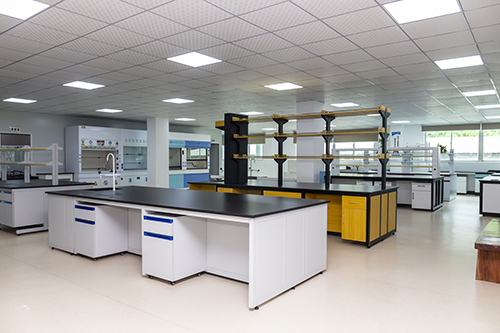Table of Contents
Types of Chemical Lab Workbenches
All-Steel Structure
Steel-Wood Structure
All-Wood Structure
Installation Steps for All-Steel Lab Workbench
1. Adjust Feet:
Check and rotate adjustment feet to be 5mm from the ground.
2. Position Cabinets:
Place cabinets as per the drawings.
Ensure the top table is level using a spirit level.
Connect cabinet edges with screws or bolts, making sure all feet are grounded and stable.
3. Install Countertop:
Fix the side sealing plate.
Pre-cut holes for sink and reagent rack columns if needed.
Apply silica gel or screws to secure the countertop.
Countertop Installation Methods:
Glue Method:
Apply silica gel 10-15mm from the cabinet edges.
Place countertop flat, ensuring no glue overflow.
Screw Method:
Drill holes and adjust height using screws.
Finishing:
Ensure transitions are flat.
Use heavy objects or padding to level as needed.
Fill gaps with epoxy or silicone glue, matching the countertop color.
Installation Steps for Lab Hanging Cabinets
Mark Position:
Determine height and length on the wall and mark accordingly.
Draw Guidelines:
Use an ink fountain to draw straight lines on the wall.
Drill Holes:
Drill holes on the hanging board and wall as per marks.
Use a 12mm electric hammer drill for the wall holes.
Install Hanging Strips:
Fix diagonal hanging strips with self-tapping screws.
Hang the cabinets and connect them using screws.
Adjust Door Panels:
Ensure door panels are level with the bottom plate.
Adjust door seams to be even.
Precautions
Protect the Table:
Avoid placing sharp tools or heavy objects directly on the table.
Keep the protective film on during construction.
Avoid Damage:
Do not walk on the table without protection.
Ensure all adjustments are secure to prevent damage.
By following these steps and precautions, you can ensure a successful installation of lab workbenches and cabinets, maintaining both functionality and safety in your chemical laboratory.




